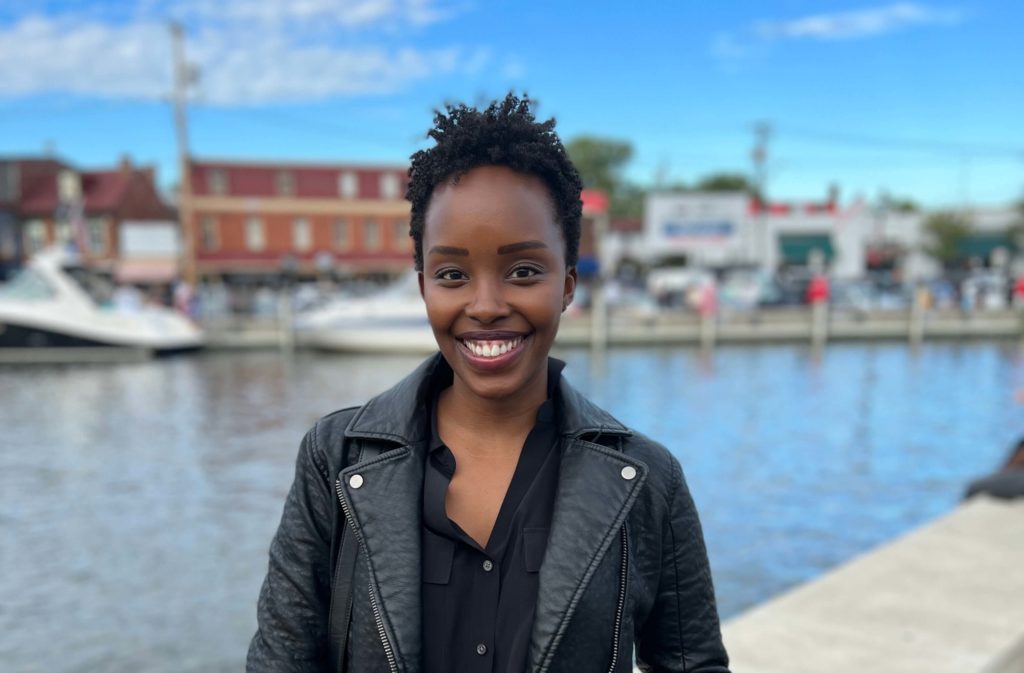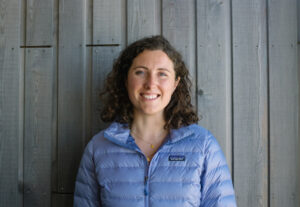
“I tell my story not because it is unique, but because it is the story of many girls” said Malala in her 16th birthday speech at the United Nations in 2013.
Growing up in Pakistan, Malala Yousafzai was a young activist in her home country, writing about the challenges and injustices of life under the Taliban. Yet because of this, she was shot and almost killed in October 2012. The rest is history and Malala has since become a leading voice in the defense of girls’ education.
It seems fitting that Malala would also be a model for community activism. Girls around the world not only look up to her, but can relate to her themselves. Following her tragedy, thousands would start to follow Malala and propel her to the world stage.
Determined to continue her fight, Malala set up a global fund in 2013 to invest in projects that support the right of girls to 12 years of free, safe, quality education. Today, the Malala Fund is working directly with communities around the world, investing over $25M in regions where girls are at risk of missing out on secondary education.
Communications is a major part of that effort, says Carine Umuhumuza, Chief Communications & Creative Officer of the Malala Fund.
Alongside corporate communications about the fund’s advocacy and research programs, Umuhumuza is constantly working to showcase the stories of girls who, like Malala, are speaking out on issues like education and gender equality.
“Our communications team is focused on amplifying the experiences and expertise of education advocates – girls, activists, and our staff – so that we can socialize the issue of girls’ education and ultimately, drive a movement for girls’ education as both an urgent and cross-cutting issue across the development sector” adds Umuhumuza.
In 2018 the Malala Fund launched Assembly, a digital publication and newsletter, so that girls could share their own stories. Since then, the collaborative online publication has won numerous awards, including the prestigious Webby Awards in 2020.
Intrigued about the Malala Fund’s bottom-up approach, I met with Umuhumuza to hear how the Assembly platform is helping to build a community of changemakers around the world. In this interview she shares how the pandemic has streamlined the way that they work, while also showing how digital communications is advancing the Malala Fund’s advocacy objectives.
On one hand, the Malala Fund is supporting local champions and helping them spread their voice globally, while on the other hand it is amplifying global movements and activists in a bid to inspire others.
“Together, this allows us to showcase a more layered approach to our work and a much more diverse voice” concludes Umuhumuza in this insightful interview on the power of digital advocacy.
Q. What has been the impact of the pandemic on your comms? Has Malala Fund’s communications team become more responsive and agile over the years? If so, in what way?
At Malala Fund, the role of our communications team is to create and shape conversations about Malala Fund’s work, to educate our audiences and inspire supporters to take meaningful action for girls’ education.
Our communications team is focused on amplifying the experiences and expertise of education advocates – girls, activists, and our staff – so that we can socialize the issue of girls’ education and ultimately, drive a movement for girls’ education as both an urgent and cross-cutting issue across the development sector.
During the pandemic, we certainly felt the impact of not being able to brainstorm and work together in the same room. Our communications team sits in Washington DC, in New York, and soon will sit in London, so it was challenging for creativity to flourish organically without being together in the office. Malala Fund is a young organization, so thankfully, we were already adept at working in a digital environment. Alongside Slack and Zoom, Google docs allows us to brainstorm and collaborate on creative work.
We used the pandemic as a point to do some learning and work on long-term projects, like a website redesign project and expansion of the online profiles of grantees who make up the Malala Fund Education Champion Network, for example.
We had planned to organize a global gathering to bring together all our activists, learn about their work, understand their activism journey, and hear what motivates them. The gathering was cancelled due to the global lockdown. We took a systematic approach, going country by country and identifying translators where needed to make sure that we were able to have meaningful conversations and that our grantees felt comfortable telling their stories.
When some of the restrictions started to lift we started thinking about how we could showcase these stories visually. That meant finding local photographers who could help us to tell their stories visually by visiting their project sites, going to their homes, and attending local chapter meetings with them. You’ll see that now on our website with great storytelling for each Champion.
Our communications team is focused on amplifying the experiences and expertise of education advocates so that we can socialize the issue of girls' education and ultimately, drive a movement for girls' education.
@CarineUmu Tweet
Overall, it was a huge learning year for all of us to better understand how to create stories together with our grantees in an agile manner.
Our communications team has always been quite lean. We’re about ten people now but when I joined we were only six people. We’ve been lucky to have communications folks who can write and edit, and have the ability to curate visuals and understand how to bring it all together. It speaks to our ability to recruit young, diverse communicators who have varied skill sets and interests. My team is made up of Gen Z and Millennials who are plugged into different online niches and digital spaces. They have a range of media consumption that adds to our ability to ideate and create compelling and culturally relevant content for a global audience. That way, we’re able to test some of our messaging and get an idea of whether it will penetrate and reach our target audiences.
Malala Fund has always been intentional about where we show up. Our mission is to build a world where girls can learn and lead, and this means that we have to meet girls where they are. We’ll read the niche blogs and newsletters young people are reading, find out who influences them and then engage with them authentically. In doing so, we learn the language of these social platforms, not just through reading about and through our own consumption, but also by experimenting with emerging platforms and joining new online communities to better understand how to engage in those spaces.
We also make an effort to embed our values and ensure that they are guiding our work and our decisions. Some of our values include being brave, valuing differences, and being able to think creatively, for example. Those are embedded in our decision-making and our communications ethos. We want to put girls — in all their diversity — forward as experts of their own lives. This requires high standards for safeguarding and duty of care to the young women that we highlight in our communications work.
Meanwhile, we’re constantly interrogating our editorial guidelines and making necessary updates to make sure that the language that we’re using isn’t reinforcing racism or colonialism, or gender discrimination. We take care to not alienate or stereotype the communities that we work with or write about.
Those three things together – our recruitment, being intentional about the places where we show up, and having our values drive our work – allow us to be responsive when the rest of the world is shifting.
Q. This way you are really focusing on the people that you are really touching, and using language that reflects this…
Absolutely. Language and content should always be accessible. We encourage our colleagues across the organization to ensure that our content is accessible to the widest audiences. If young women can’t read our work and actually understand it, then we’re not doing our job to focus on girls in everything we do. We do our best to distill our content and make our message and calls to action crystal clear.
Malala Fund has always been intentional about where we show up. Our mission is to build a world where girls can learn and lead, and this means that we have to meet girls where they are.
@CarineUmu Tweet
Q. A recent review of Malala Fund’s public campaigning recommended that it build on its strategic advocacy and creative communications by developing a connected, holistic public campaigns approach and piloting new mobilizing approaches. With this in mind, how are you planning your advocacy campaigns and content for maximum impact?
We’re still in the midst of a transformation. If we look at the campaign landscape, it has changed so much in the last five years or so… In the 2010s, it was saturated with hashtag campaigns and digital campaigns launching almost every single week. Today, globally we’re facing so many compounded crises together, whether it’s the regression of girl’s and women’s rights, climate catastrophes or conflict, as well as the long-term impact of COVID-19.
These challenges are interlinked, especially for girls and women, so as cause-driven organizations we need to be much more closely connected to existing movements, like modern movements for gender equality and climate justice. We need to learn from them, amplify them and think about how we collaborate with them.
These movements are growing so we’re trying to understand where we fit in – where the Malala Fund can support and collaborate with movements that exist. This involves talking to activists, re-examining our campaign approach and learning from some of the leaders of these new movements and having conversations with our national partners, while simultaneously speaking to girls about how they want to drive change.
We’re in a step-back mode, recognizing that the landscape has changed. Perhaps we still need to drive some campaigns and play the role of convener or facilitator, but we know that we can’t do it all by ourselves anymore. We need to figure out how to support what’s already existing.
For example, we invited Vanessa Nakate to join our board earlier this year, and we are actively learning from the Rise Up and Fridays for Future climate movements… There are 130 million girls out of school, yet there is not the same kind of outrage that we are seeing for the gaps in girls’ education as we see for climate change. We are starting to think deeply about that, both at the global level and the national level.
As cause-driven organizations we need to be much more closely connected to existing movements... We need to learn from them, amplify them and think about how we collaborate with them.
@CarineUmu Tweet
Recently, we have not been campaigning in the traditional sense, we have mostly been focused on awareness-raising through content series, particularly through Assembly, our digital publication and newsletter.
For example, we created a series called Change the Subject showing the link between climate and education. We asked young people how they learned about climate change and showed how studying climate change can help create a greener, fairer future. This helped us to engage more in COP [the annual climate change conference of the United Nations], where the Malala Fund sent activists and Malala Fund Girl Fellows to speak alongside other climate justice activists on climate education.
The Assembly newsletter platform was created to amplify girls’ opinions and experiences on the world’s most pressing issues, from climate change to racial justice and gender inequality. To date, Assembly has published pieces by girls in more than 100 countries and in 25 languages.
Q. In this context, how has storytelling changed? With everyone competing on social media, how do you build online engagement?
Storytelling compels us to be dynamic by nature.
When the idea for our digital publication Assembly first started, it was more staff-driven and we wrote and collected stories from different organizations and shared them on our platform. Then reader-generated stories started to grow organically. We put up a submission form online, translated it, and now hundreds of young women are coming to us and saying, “I have something that I’m dealing with in my community” or “There’s an issue at school that I want to talk about”, and so on. We are inundated with ideas!
We look through Assembly submissions every month with the editorial team, and then will correspond with young women and girls to start a conversation about their submission. We introduce them to our editorial process and guide them as they write the first draft. We will ask them questions, support them to add additional research or context to their stories. It’s the best part of our job — we get to speak directly with young women and help them publish their stories online.
That’s how we create our newsletter every month. We’re essentially running a small media company within Malala Fund.
This past year, we started running small focus groups with Assembly readers around the world. This is an opportunity to hear from our community, gauge what’s working, and find out how we can improve this platform for young women. We want to create a digital safe space for young women to be able to talk about their experiences.
One of the things that we learned from them from this past review was the request for more translated content. Readers told us that language was a huge barrier preventing them from sharing their content with other people in their communities. We’ve increased our translated content over this past year as a result, which included adding budget for translations. Now we have at least one translated article in every newsletter and have published content in 28 languages, which is remarkable for a small team that’s also supporting wider organizational communications and digital work as well.
Q. In 2020 Assembly even won the Webby Award for the best email newsletter and recently you won the Anthem Awards in the Diversity, Equity & Inclusion category… Congratulations!
Thank you! We have an incredible design team called Language Dept. that helped us overhaul the design of the newsletter and website. The design process was collaborative and included girls in the user research. They helped us choose the colors, layouts, navigation, language choices and overall user experience. They’ve been part of every iteration of the new look and feel of Assembly.
We look through Assembly submissions every month with the editorial team, and then will correspond with young women and girls to start a conversation... We’re essentially running a small media company within Malala Fund.
@CarineUmu Tweet
Q. How do you leverage that active community voice in order to influence policymakers and help shape policy?
Actually, it’s our community that helps us to create impactful advocacy moments.
For example, Somaya Faruqi was one of the Afghan Dreamers with whom we had already connected with many years ago when she was still captain of the robotics team. So when the United Nations invited Malala to speak at the Transforming Education Summit, we responded by saying that we would also like to invite Somaya to speak with Malala about the girls’ education ban in Afghanistan. This helped to take Somaya’s message to global leaders and support her call to action.
It’s about building up an engaged network of young women for direct, impactful advocacy. At the Transforming Education Summit, Somaya not only gave her speech at the UN but also participated in bilateral meetings with Malala and various global leaders. That’s one way that we are helping to amplify the voice of our community and creating shared advocacy messages for policymakers.
Q. So your approach is to build up momentum online and then leverage existing events or initiatives to bring forward the voice of young leaders?
Absolutely, our goal is to bring forward the authentic voice of youth leaders on these issues.
While Malala herself has an incredible story, we aim to amplify activists who can speak authentically about some of the policy changes that are needed in their communities. At the Transforming Education Summit, we were looking at the lens of how these compounded issues are affecting girls’ education. Somaya was able to speak directly about the impact of conflict in Afghanistan, and Vanessa was able to speak about her experience of climate catastrophes and their impact on girls in Uganda.
Our aim is also to diversify our thought leadership so that we not only have an organizational voice from senior staff but also make sure that opportunities exist for people across every area of the organization to join the conversation.
Together, this allows us to showcase a more layered approach to our work and a much more diverse voice.
Latest blog posts

Exploring the AGILE Framework
In an interview for the Stories & Strategies podcast, I explain why agility is essential to succeed in today’s digital landscape.

Top 5 Proven Communications Strategies To Fight Disinformation
Strategies every communications leader should consider to prevent disinformation, complete with real-world examples and case studies.

How Patagonia’s digital advocacy campaigns are driving real-world impact
Find out about Patagonia’s approach to digital advocacy in this interview with Digital Community Manager Lauren Henshaw.
- Written by: Nicholas Bruneau
- Posted on: October 25, 2022
- Tags: communications, Digital Advocacy, Storytelling

